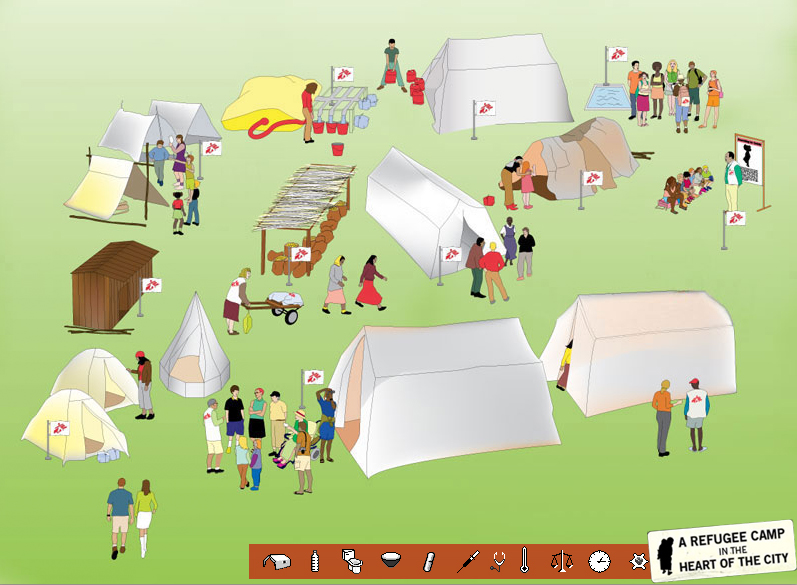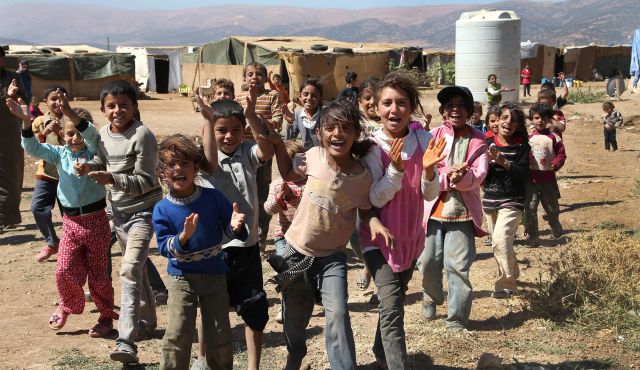1. In order to first understand and define refugeehood, one must be able to define whom a refugee is. “The term “refugee” applies to anyone with a well founded fear of being persecuted for reasons of race, religion, nationality, membership of a particular social group or political opinion, is outside the country of his nationality and is unable or,owing to such fear, is unwilling to avail himself of the protection of that country; or who, not having a nationality and being outside the country of his former habitual residence as a result of such events, is unable or, owing to such fear, is unwilling to return to it” (1951 Convention).
UN General Assembly, Convention Relating to the Status of Refugees, 28 July 1951, http://www.refworld.org/docid/3be01b964.html [Accessed 25 October 2014]
Refugeehood therefore is the state of being a refugee, It is everything a refugee experiences being a minority within a state whether that refugee is privileged or not.
2. In The Origins of Totalitarianism, Hannah Arendt asserts,
The first loss which the rightless suffered was the loss of their homes, and this meant the
loss of the entire social texture into which they were born and in which they established
for themselves a distinct place in the world. This calamity is far from unprecedented; in
the long memory of history, forced migrations of individuals or whole groups of people
for political or economic reasons look like everyday occurrences… [yet] Suddenly, there
was no place on earth where migrants could go without the severest restrictions, no country where they would be assimilated, no territory where they could found a new
community of their own”.
Arendt’s writings on refugeehood demonstrate that she largely conceived of exile and
statelessness as permanent conditions. If refugeehood ended, it was more often with the death of refugees in internment or concentration camps than with one of the so-called ‘durable solutions’ to displacement—voluntary repatriation, local integration in the country of asylum, or resettlement to a third country. Arendt wrote that what was ‘unprecedented’ about the European
displacement crisis was ‘not the loss of a home but the impossibility of finding a new one.
Rethinking Refugeehood: Statelessness, Repatriation and the Contributions of Hannah Arendt
http://citation.allacademic.com/meta/p502392_index.html (Accessed September 14, 2014)
3. Refugeehood can also be a narrative by, around, and about refugees.
CRS Student Caucus.
http://crs.yorku.ca/student-conference (Accessed October 25th, 2014)
4. The state of being a refugee.
Wikitionary
http://en.wiktionary.org/wiki/refugeehood (Accessed December 9, 2014)
1. Refugeehood can be a narrative about refugees by journalists, visitors, tourists, UNHCR candidates, anyone really. In this report on Some Sociological Aspects, Emanuel Marx refers to the conditions within refugee camps on the West Bank. An example of life as a refugee in the Jalazon camp (West of Jerusalem), they have a camp leader- the UNRWA official responsible for the administration. There are institutions such as a food distribution centre, stores, a youth club, a cook-house where daily meals for the camp’s children are prepared and served etc. There’s a water tank at one side of the camp surrounded by women fetching water for their families. Coffee-houses are visited by men only and meeting places are none other than a barbershop. Shelter for refugees is created by thin concrete or asbestos roofs. Some refugee camps have installed electric street lighting whereas some are deprived of electricity and pipe water overall. Jalazon camp has neither electricity nor piped water (Marx 6-7).
When permanent camps were set up between 1955 and 1957, refugees feared that permanent dwellings would tie them down and would weaken their desire to go back home one day. In order to emphasize the temporary aspect of the dwellings, they were officially called “shelters” (8),
Some Sociological and Economic Aspects of Refugee Camps on the West Bank.
These conditions contribute to refugeehood in areas of civil war, more specifically, in the middle east. In the West, the meaning of refugeehood can be altered based upon their privileges in host society. One may be a refugee yet still live peacefully due to having certain privileges.
2. Facilities within a refugee camp as mentioned in Emanuael Marx’s report. Here is a visual idea of what a refugee camp may look like with its institutions.

Refugee Camp Interactive Map
http://www.refugeecamp.org/press/images/MSF%20Refugee%20Camp%20Interactive%20Map.jpg (Accessed December 9, 2014)
3. Displaced Syrian children in refugee camp in Deir al-Ahmar, Lebanon. Picture extracted from an article discussing Lebanon blocking Syrian refugees from entering. This image gives off a representation of life of children within refugee camps. Although they suffer, as children they do not allow major issues to control their happiness.

UN: Lebanon blocks Syrian refugees from entering
http://www.haaretz.com/news/middle-east/1.621396 (Accessed October 26, 2014)
4. Refugee Resettlement Program (Becoming Canadian)
This Youtube video is of a young man going through the process of becoming Canadian while being a refugee. He speaks of the troubles he encounters and the opportunities he dreams of being in Canada.
http://www.youtube.com/watch?v=_tP_2AkGOrU
The Paradox of Refugeehood
The Africa Press
http://thinkafricapress.com/legal/blog/refugee-paradox (Accessed December 9, 2014)
Refugee Solutions, or Solutions to Refugeehood
James Hathaway
http://pi.library.yorku.ca/ojs/index.php/refuge/article/view/21378 (Accessed December 9, 2014)
The Complexity of Determining Refugeehood: A Multidisciplinary Analysis of the Decision making Process of the Canadian Immigration and Refugee Board
Journal of Refugee Studies (2002) 15 (1): 43-70
http://jrs.oxfordjournals.org/content/15/1/43.abstract (Accessed December 9, 2014)
Case Law
Denied refugee status
Canada (Minister of Citizenship and Immigration) v. Serhan, 2001 FCT 1029 (CanLII), <http://canlii.ca/t/mvf> retrieved on 26 Oct. 2014.
Approve for judicial review to reconsider refugee status
Assouad v. Canada (Minister of Citizenship and Immigration)), 2006 FC 955 (CanLII), <http://canlii.ca/t/1p3tg> retrieved on 26 Oct. 2014.
Assouad v. Canada (Minister of Citizenship and Immigration)), 2006 FC 955 (CanLII), <http://canlii.ca/t/1p3tg> retrieved on 26 Oct. 2014. https://www.canlii.org/en/ca/fct/doc/2006/2006fc955/2006fc955.html?searchUrlHash=AAAAAQAlcmVmdWdlZSBmcm9tIGxlYmFub24gcG9zaXRpdmUgb3V0Y29tZQAAAAAB
Ben-Porath, Yoram, and Emanuel Marx. Some Sociological and Economic Aspects of Refugee Camps on the West Bank. Jerusalem: Hebrew University, 1971. 6-8. Print.
Bradley, Megan. “Rethinking Refugeehood: Statelessness, Repatriation and the Contributions of Hannah Arendt” Paper presented at the annual meeting of the International Studies Association Annual Conference “Global Governance: Political Authority in Transition”, Le Centre Sheraton Montreal Hotel, MONTREAL, QUEBEC, CANADA, Mar 16, 2011. 2014-09-14 <http://citation.allacademic.com/meta/p502392_index.html>
Canada (Minister of Citizenship and Immigration) v. Serhan, 2001 FCT 1029 (CanLII), <http://canlii.ca/t/mvf> retrieved on 26 Oct. 2014. https://www.canlii.org/en/ca/fct/doc/2001/2001fct1029/2001fct1029.html?searchUrlHash=AAAAAQAUcmVmdWdlZSBmcm9tIGxlYmFub24AAAAAAQ
Citizenship and Immigration Canada. “Refugee Resettlement Program (Becoming Canadian).” Online video clip. Youtube. Youtube, 20 November 2009. Web. 25 October 2014.
CRS Student Caucus. Power, Representation, and Identity: Narratives by, about, and around refugees and forcibly displaced persons. York University. Toronto. Centre for Refugee Studies. 27-28 April 2012. Web. http://crs.yorku.ca/student-conference
Homes, Oliver. Displaced Syrian boys and girls in a refugee camp in Deir al-Ahmar, Lebanon. 16 Sept. 2014. Haaretz. Web. 26 Oct. 2014. http://www.haaretz.com/news/middle-east/1.621396
UN General Assembly, Convention Relating to the Status of Refugees, 28 July 1951, United Nations, Treaty Series, vol. 189, p. 152, available at: http://www.refworld.org/docid/3be01b964.html [accessed 25 October 2014]